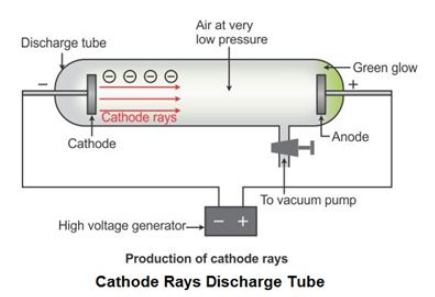

In the cathode ray tube, electrons are ejected from the cathode and accelerated through a voltage, gaining some 600 km/s for every volt they are accelerated through. Crucially for the Accelerate! recipe, you need a larger magnetic field to bend a faster-moving particle. The key here is that magnetic fields will bend the path of a moving charged particle, and we can make use of this effect to control a beam. Speed of an electron accelerated through 1 V: In this case, turn it off, leave it for a short period, and turn it on again.
CATHODE RAY EXPERIMENT VIDEO TV
Sometimes, often after repeated cycling, the TV will fail to degauss.

Put the strong magnet near to the TV screen.A relatively still, bright image or video makes the effect we’re about to observe easier to distinguish. For a TV, many camcorders and digital stills cameras will have an S-video, component or composite connection older camcorders may have these directly, but newer camcorders or digital cameras may have a bespoke cable which plugs into a mini-USB or similar jack on the camera and feeds out to multiple types of connector for insertion into the TV. If it’s a computer screen simply plugging it into a laptop should work.

Get an image on the television or computer screen.

Apply a higher magnetic field to demonstrate that the curvature can again be increased by increasing the magnetic field strength.Having curved the path of the beam, turn up the energy further and show that the curvature decreases with increasing electron energy.If your CRT does have Helmholtz coils, turn up the current in them until the beam bends.You may need to do this quite slowly if the camera is set to a low frame rate to increase its low light sensitivity. If your CRT doesn’t have Helmholtz coils, simply wave the neodymium magnet near the CRT to show the beam bending.Turn up the energy of the electron beam until the gas inside the globe is clearly glowing.Dim the lights and turn on the camera if you’re using one.If you’ve not got a cathode ray tube, an old CRT TV or computer monitor and a strong magnet will provide a more qualitative version of this demo.
CATHODE RAY EXPERIMENT VIDEO MANUAL
The beams of electrons are too dim for anything except a very small audience to see directly, and are something of a challenge for video equipment too! A camera with a night mode, or manual control over gain (or ISO) and shutter speed will probably be necessary. In addition to a cathode ray tube, you’ll probably need a sensitive camera to show your audience the results of this experiment. In the absence of Helmholtz coils, a strong neodymium magnet should suffice to bend the electron beam. The ideal CRT is enclosed by Helmholtz coils to allow a varying magnetic field to be applied. This experiment obviously requires a cathode ray tube filled with gas which glows when electrons hit it.


 0 kommentar(er)
0 kommentar(er)
